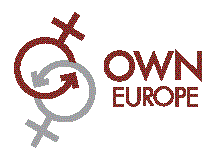
Contribution from OWN Europe to International Women’s Day,
8 March 2023
Europe is the most digitally connected region in the world with nearly 90% of the population being online[1]. While most policy makers look proudly at this achievement, this general figure hides huge disparities between countries and population subgroups. Large numbers of people in Europe face increasing challenges to cope with the rapid digitalisation of many services that are essential to take part in today’s society.
On the occation of the International Women’s Day on 8 March, the Older Women’s Network, Europe (OWN Europe) examines the intersection of age and gender in our increasingly virtual reality.
Achieving “meaningful” connectivity
Since the 2000s, both public and private service providers have been engaged in a race for innovative and cheaper digital solutions to interact with their citizens and consumers. The recent COVID-19 crisis has boosted digitalisation in various domains impacting daily activities which used to be mainly accessed through non-digital ways. In some countries, citizens and consumers are now expected to go online to apply for social care, fill their income tax form, request public support to cope with rocketing inflation, book a doctor’s or dentist appointment, pay their bills or transfer money, find information on bus routes and buy a ticket for local public transport, and so forth. In a few countries it is mandatory to use digital self-service to access a wide range of public services.
Yet, as the latest Eurostat surveys on various internet activities show, even in countries which have almost reached universal access to internet, the ratios of adults using internet for essential services are lower than the ratios of people considered to be connected to internet in all age and gender groups. This demonstrates that while achieving universal connectivity is essential, it is not enough to achieve universal meaningful connectivity, as stressed by the United Nations International Telecommunication Union.
Growing digital divide among older persons in the European Union
While digitalisation facilitates the life of many, it leaves behind significant numbers of citizens, as reported by a recent survey of King Baudoin Foundation[2]. When assessed in a more detailed way, the digital divide is in fact increasing particularly amongst older age groups due to the complexity and increased interconnectivity of most digital services which raise safety concerns among people with lower digital skills. In 2020, 46% of the population was at risk of digital exclusion, an increase of 6 percentage point since 2019.
Older women experience further inequalities in accessing the Internet and digital services
The recent Eurostat survey on the use of internet banking shows that in the European Union slightly less than 68% of both men and women aged 25-54 while only 46% of men and 39% of women aged 55-74 use internet banking. This means that more than 32% of women aged 25-54 years old and 61% of women 55-74 years do not use internet banking.[3] If persons aged 75+ were included in the surveys, the ratio of older people, and particularly older women facing digital financial exclusion in the European Union would be much higher.
Although younger women resident in Europe are now doing as well or even slightly better than men in terms of using internet for essential services, older women are still at a higher risk of digital exclusion than older men because on average they have lower incomes, lower educational attainment, shorter careers due to family care duties, often worked in jobs which required no or low levels of digital skills or where they faced gender discrimination in accessing training on digital skills. They are also more likely to have lower financial literacy, have no or a slow internet connexion, or find it more difficult to afford the costs of hardware and internet subscription packages.
Older women’s digital exclusion: the result of accumulated disadvantages during the life course
As highlighted by the UN Independent Expert on the enjoyment of human rights by older persons[4], older women’s lack of confidence in using digital devices results from accumulated disadvantages throughout their life course that put them at a higher risk of social exclusion and dependency on others to access essential digital services.
Older women are however faced with unchanged expectations to perform their professional duties, maintain households, deal with budgets, banks, administration, care for members of the family (often relatives with disabilities or serious illness or young children) and so forth. Most of them fulfil these numerous duties for the benefit not just of their families and employers, but for their communities and society at large.
At the same time there is no balance between the responsibilities older women endorse and the support they receive. This is especially important in the field of digital literacy, digital banking, online learning and training and specialised online courses. Older female workers are barely included in professional digital trainings. Online training on support, for example on how to care for a person with disabilities or dementia at home and so on is limited and difficult to access; this is especially likely for those who need them most.
Older women have accumulated vast amounts of experience and knowledge during their life course, but they lack the tailored educational and financial support they need to benefit on an equal footing from the opportunities offered by today’s digital world to fulfil their potential and more easily meet their various responsibilities in their families and local communities.
On this day to acknowledge International Women’s Day around the world we must continue to draw attention to the complex gendered nature of digital exclusion, particularly as it relates to older women.
*******

Contact person:Anne-Sophie Parent, Chair OWN Europe (ansoparent@gmail.com)
See also :
AGE web page on Gender Equality in old age
[1] United Nations International Telecommunication Union, Sept. 2022, Press release
[2] Roi Baudouin Foundation, Baromètre de l’inclusion numérique, 2022






